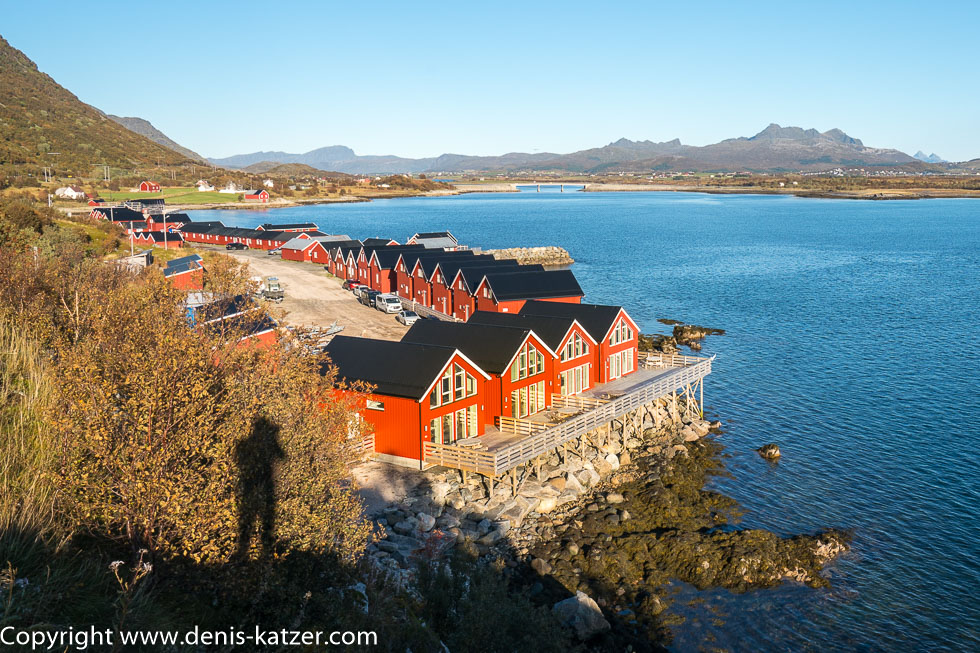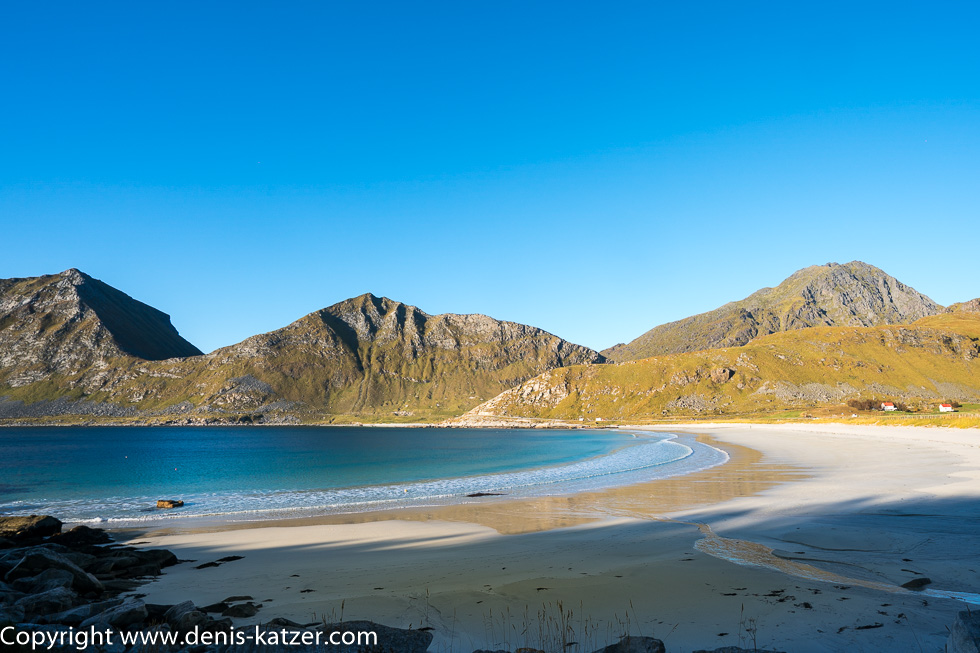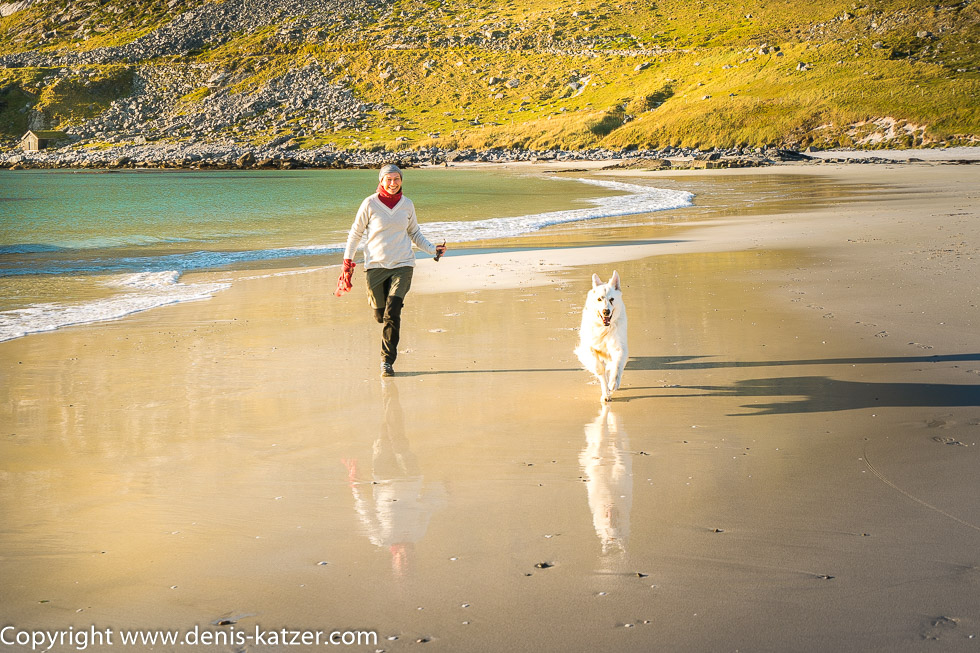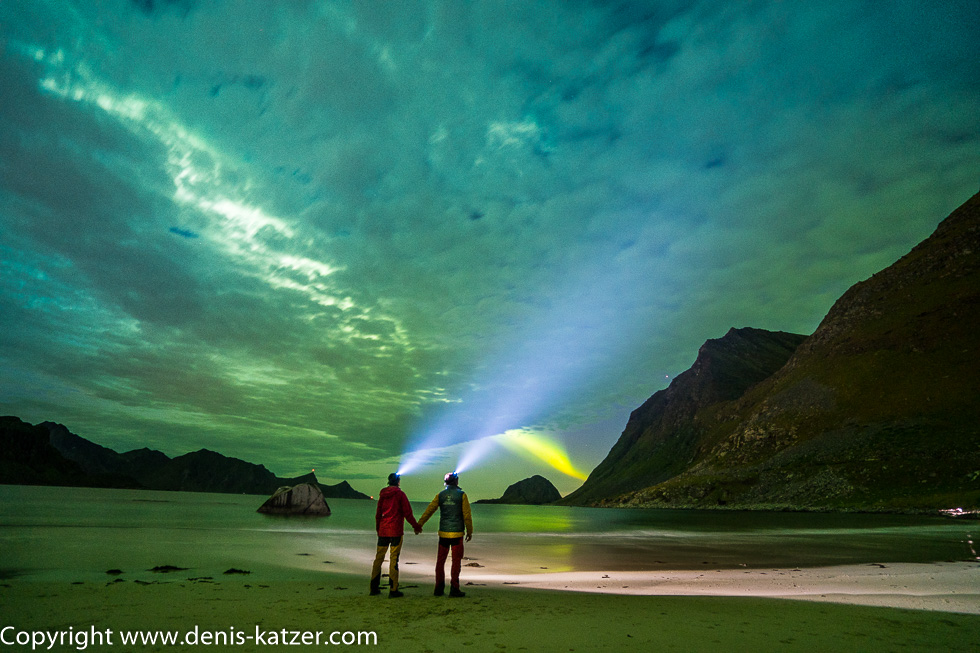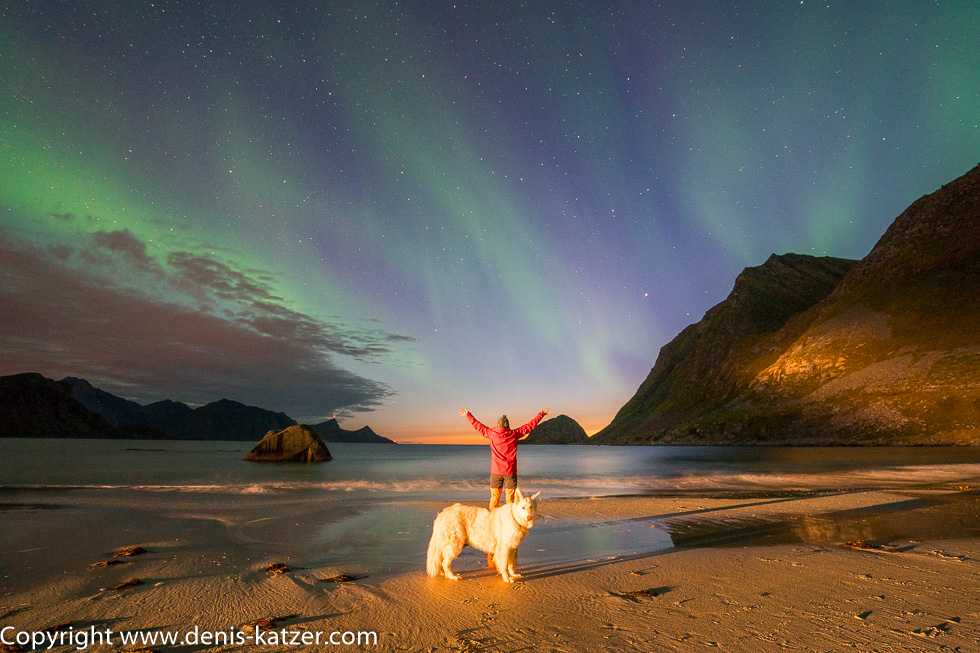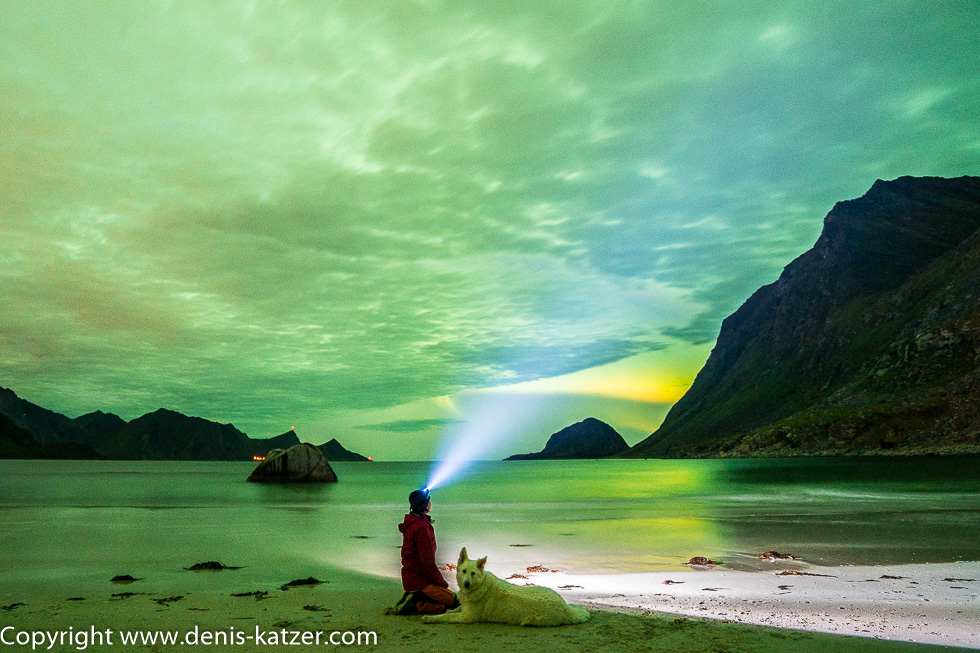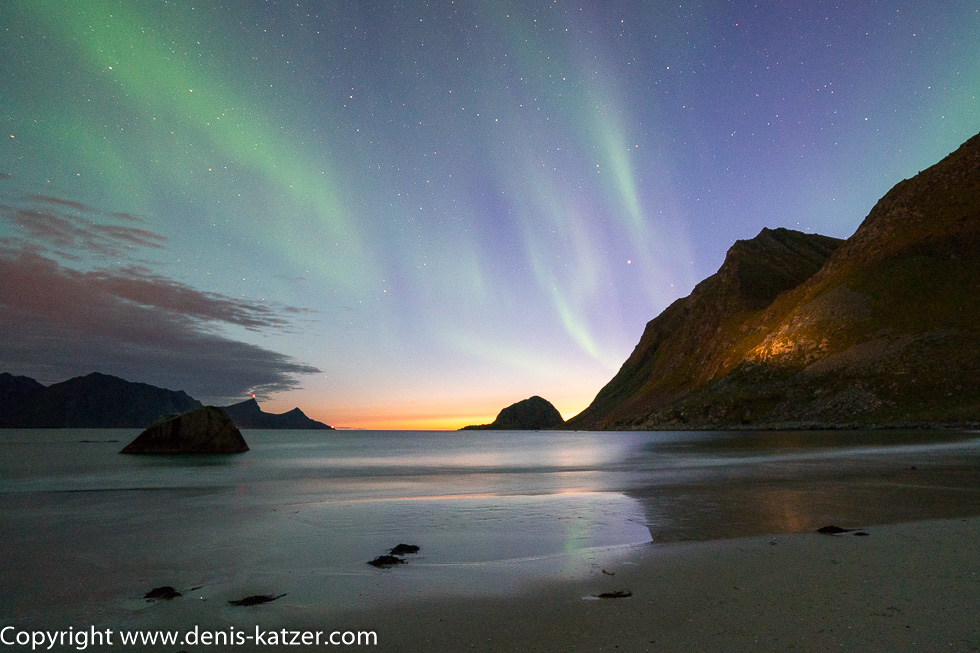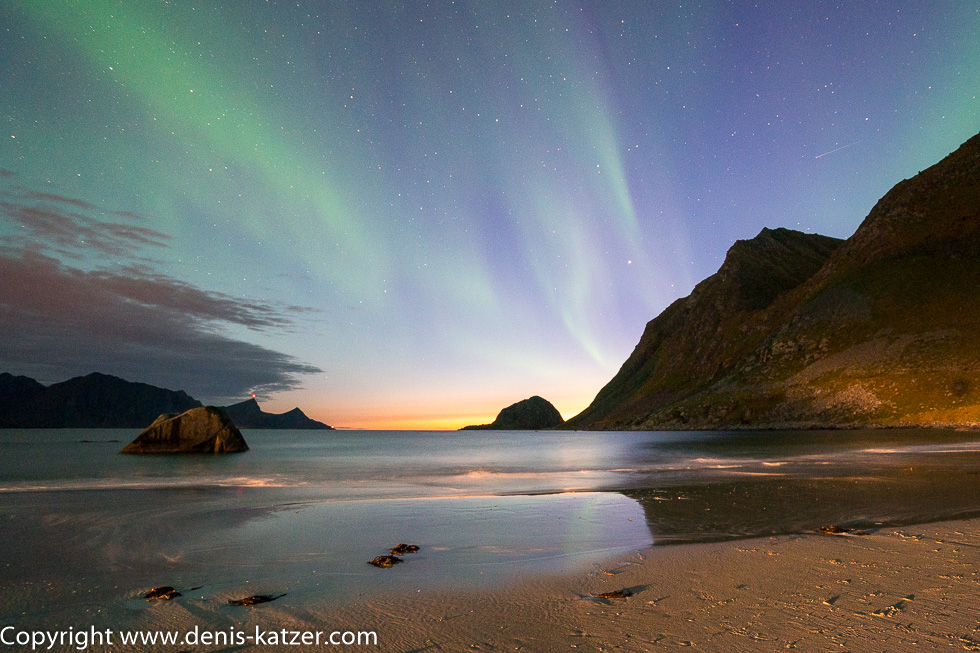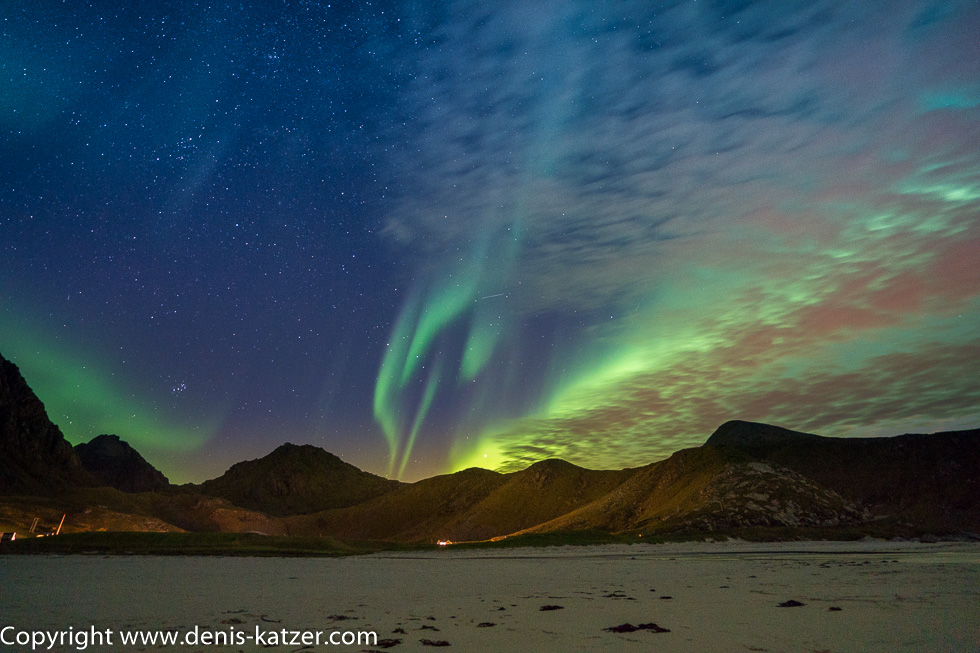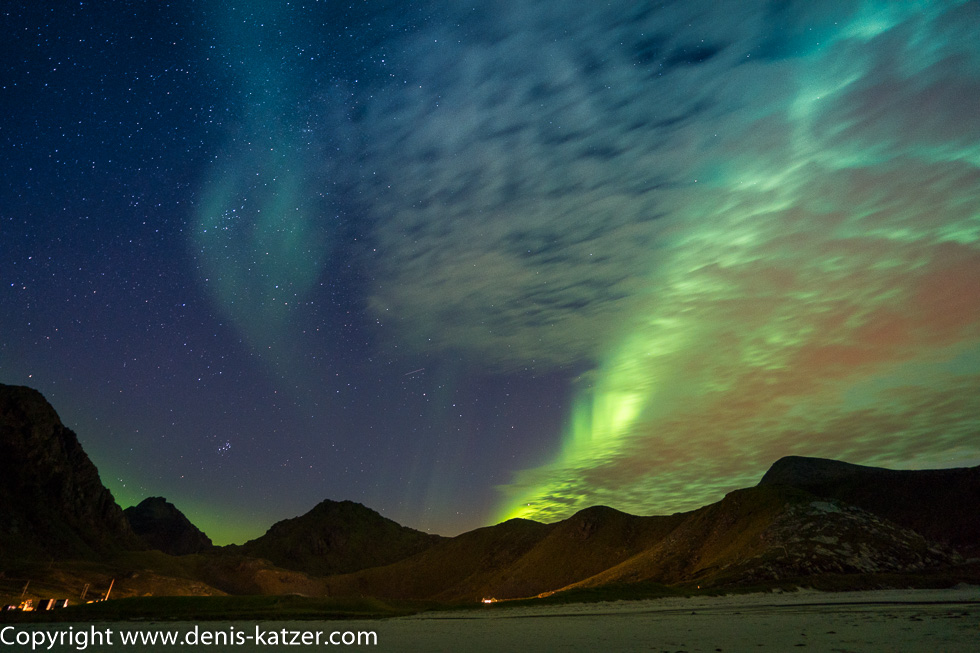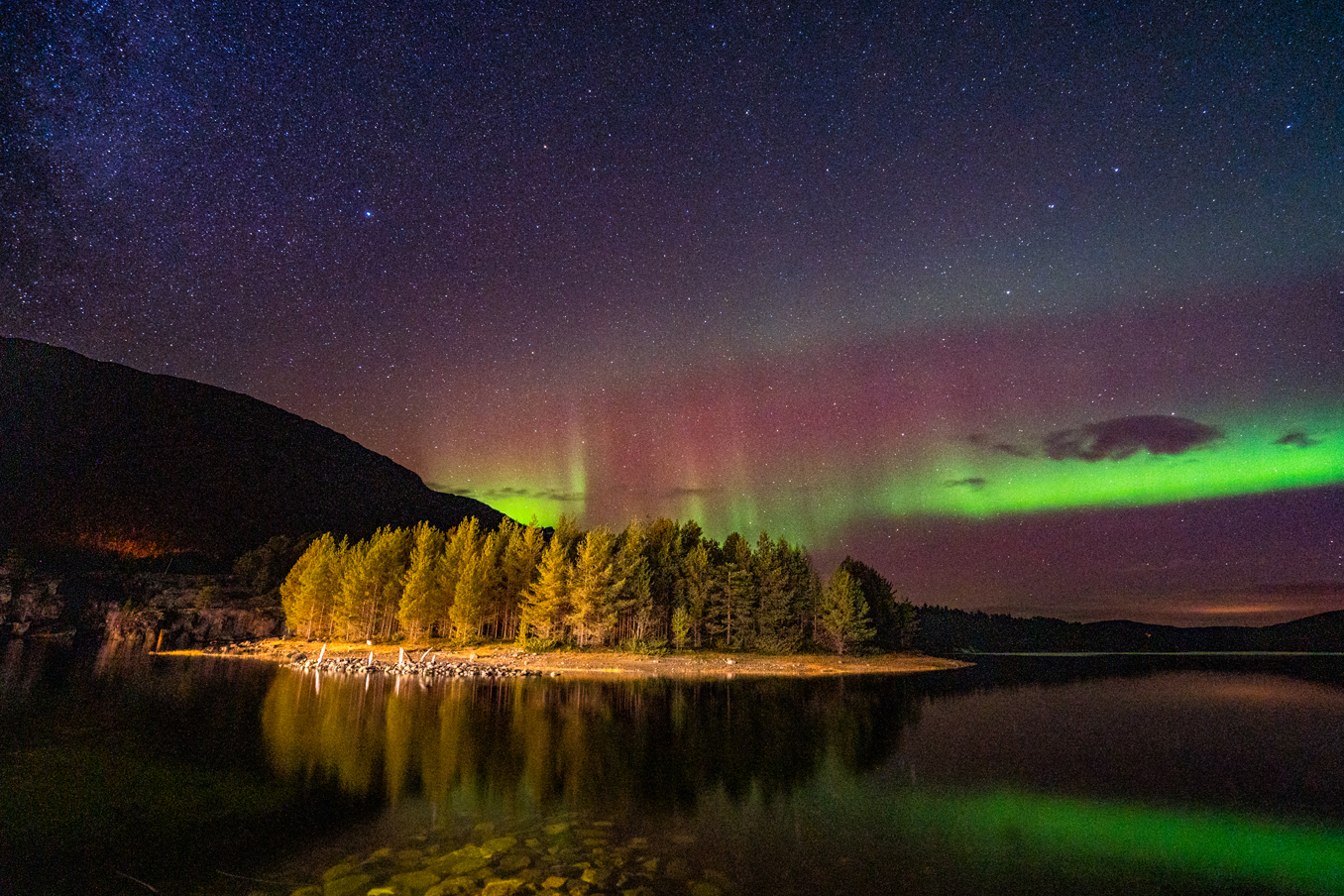
Myths and stories of the Northern Lights
N 68°11'57.5'' E 013°31'56.1''
Date:
27.09.2020
Day: 056
Country:
Norway
Location:
Beach
Daily kilometers:
40 km
Total kilometers:
5086 km
Soil condition:
Asphalt
Ferry
0
Bridge crossings:
0
Tunnel passages:
3
Sunrise:
06:58 am
Sunset:
6:57 pm
Temperature day max:
7°
Night temperature min:
4°
Departure:
15:00
Arrival time:
17:00
(Photos of the diary entry can be found at the end of the text).
Click here for the podcasts!
Link to the current itinerary
(For more posts click on one of the flags in the map)
Although we only slept for a few hours that night, we get up feeling really energized. “Do the auroras affect us humans in any way?” asks Tanja. “It could be. Sun, moon, wind, drought, rain and snow – all weather affects human life in some way. Why not the electrically charged particles of the solar winds that collide with the gases in the Earth’s atmosphere?” I ponder. “Due to a geomagnetic storm, the auroras were so strong in the middle of the 19th century that they could even be seen in the tropics. And to answer your question about whether the aurora affects us humans, it does, at least for our technology, because it is assumed that an equivalent geomagnetic storm today would cause a worldwide blackout. That would certainly be fatal for the earth’s population. There was a major power outage in Canada in 1989, which was attributed to a strong solar wind.
But it doesn’t need a major solar storm, because in some cases electronic equipment, especially satellites, are also at risk. This even goes so far that at times of increased auroral activity, air traffic is diverted to lower altitudes and routes away from the polar region are chosen. “Wow, so the beautiful lights do have an influence on us. But what is a geomagnetic storm?” asks Tanja. “As far as I understand it, these are shockwaves from a solar wind caused by mass eruptions from our sun.” “Fascinating how everything is connected.” “Absolutely. The Christians of the Middle Ages, for example, were already trying to deduce connections by interpreting the light phenomena as an omen of an apocalypse, which was related to the fact that in the latitudes of Central Europe the light phenomena are often fiery red. But the numerous Nordic peoples also tried to establish connections between themselves and the aurora, as evidenced by numerous legends and myths,” I say. “Oh interesting. Surely you can tell me a story or two about the early peoples?” “I can,” I reply, thinking, “the inhabitants of Alaska, Siberia and Lapland, for example, believed they saw signs of their gods in the northern lights.” “You mean they thought that the gods sent the cosmic play of colors to humans to communicate with them?” “Yes.” “And what kind of signs were these?” “Well, some of their druids or shamans interpreted these signs as harbingers of a devastating war, others saw coming famines or perhaps even an impending epidemic or plague. The Sámi people, who we talked about at length a few days ago, also saw misfortune in the Northern Lights. When the aurora turned reddish in color, they thought it was caused by their dead. They then forbade their children to go outside, at least until the dead disappeared again.” “It’s strange that people back then associated the aurora with so many negative things. Yet it is so beautiful,” Tanja interjects. “Hm, that’s true, but there are also other myths and traditions. The Inuit, for example, who live in arctic central and north-eastern Canada and Greenland, also believed when they saw the aurora that the spirits of their ancestors were moving around up there. They were certain that the colored lights were a connection to the celestial realm and that this connection was lit by torches of their various ones to guide the recently deceased to a safe path to the other world. They also thought that the glow was created by tossing a walrus skull back and forth while playing. Some believed that their gods inquired about the well-being of their people. The Vikings were certain that when the Northern Lights appeared, a great battle had been fought somewhere and that afterwards the Valkyries rode across the sky to select the deceased heroes of the battle so that they could dine at Odin’s table from then on. During their wild ride across the arch of the sky, the moonlight illuminated their glittering armor, creating the colorful auroras.” “Nice story, but what are Valkyries?” Tanja interjects questioningly. “According to Norse mythology, Valkyries are the battle maidens or shield maidens who belong to Odin’s retinue,” I explain. “Thank you and can you tell me something else about Odin, my darling?” “Sure,” I reply with a laugh, because I’m currently reading a series of books about the life of the Vikings and am therefore fully immersed in the subject. “Odin was the main god of the Vikings. He was the god father, god of war and god of the dead at the same time and was also regarded as the god of poetry, runes, magic and ecstasy. It is also interesting to note that even the Maori of New Zealand had a connection to the Aurora, which is referred to as the Southern in the southern hemisphere. When the very, very rare southern light appeared, they thought it was a heavenly fire that their ancestors had lit to keep them warm on their way to the Arctic.” “The stories and myths surrounding the Northern Lights are fantastic. For me, they are also divine and to be honest, I can’t get enough of their magnificent beauty,” says Tanja. “Me neither. Hopefully we’ll have more chances to see her,” I reply and ask Tanja to prepare us a late, delicious fruit breakfast. “I’d love to,” she replies, makes her way into the kitchen a meter away from our dining table and starts chopping the fruit while I look at, sort through, edit and label the 500 pictures from the previous night.
A strong wind suddenly comes up and causes the Terra to sway slightly back and forth. I look up from my laptop and look out of the window at the sea right next to us. The rising waves are used by a few Norwegian surfers who enjoy riding a wave despite the 7 degree cold. We leave the unforgettable beach at 3 p.m. and set off on new adventures. Perhaps another polar night? We pass small reddish-brown, freshly renovated fishermen’s huts, white beaches and rugged rocky coasts until we discover a parking lot next to Hauklandstrand. “Let’s go for a walk on the beach,” Tanja suggests, so I pull out the ignition key and a little later we are walking across white sand that you would only imagine in the Caribbean. Because the pitch is not perfect for our taste, we drive on, through a tunnel and arrive at the end of the gravel road at a pitch for which they charge a whopping 25 euros just for standing there. We are certainly not stingy, but we find it difficult to pay so much money just to stand on a beach in a row with a few other campers. “Let’s turn back,” says Tanja. “Good idea,” I reply, pushing back and turning the Terra back towards Hauklandstrand. “And lo and behold, the place is suddenly empty,” I say happily. “They all went home,” says Tanja, because most of the visitors were Norwegians who had only parked here for a day trip.
From 8 p.m. onwards, we keep looking out of the window to see if we can spot the suspicious streaks in the sky. “Nothing to see,” I say disappointedly. At 9 p.m. Tanja can’t stand it any longer. “Come on, let’s walk to the beach. Maybe they’re there after all,” she urges. “Okay,” I say, grab the tripod and the new camera, on which the long exposure works again, and leave Terra Love.
On the beach, we lean our heads back and look up at the cloudy sky to see the northern lights, which, according to a discovered cuneiform script, were admired by the Babylonians in the Persian Gulf 2500 years ago. Hidden behind the cloud formations, we suddenly see suspicious stripes. “They are!” says Tanja. “Yes, I think you’re right. That looks like auroras,” I say, place the tripod in the soft sand, click the camera onto it, focus on the dark edges of the rocks that narrow the mirror-smooth sea two or three hundred meters away and press the shutter release. Impatiently, I watch the recording half a minute later. “Super! Bingo! Another bull’s eye!” I cheer and show Tanja the result. “There she is again,” she says in amazement at the great picture. Just like yesterday, we can hardly believe our luck to be successful again on the second day of our aurora hunt. Precisely because some cloud bands stretch across the night sky, the aurora looks completely different, has its own charm, especially different colors. “There’s the red you were talking about this morning,” says Tanja, pointing upwards. In fact, a reddish tinge mingles with the unconventional green. This time we stand on the beach with our headlamps, join hands and look up together. At the end of the bay, where the cloud cover becomes fragile, the aurora strip stretches across the sea and disappears into dark space. “Odin sends his Valkyries,” I say reverently. “Yes, they watch us and invite us to his table,” says Tanja. “Well, hopefully not yet. The invitation was only for the brave heroes who died in battle,” I reply. “Oh yes, that’s right, you said that. Well, then they’re looking at us and sending us health, positive energy and their protection.” “I’m sure they will,” I reply, unable to get enough of the natural spectacle…
